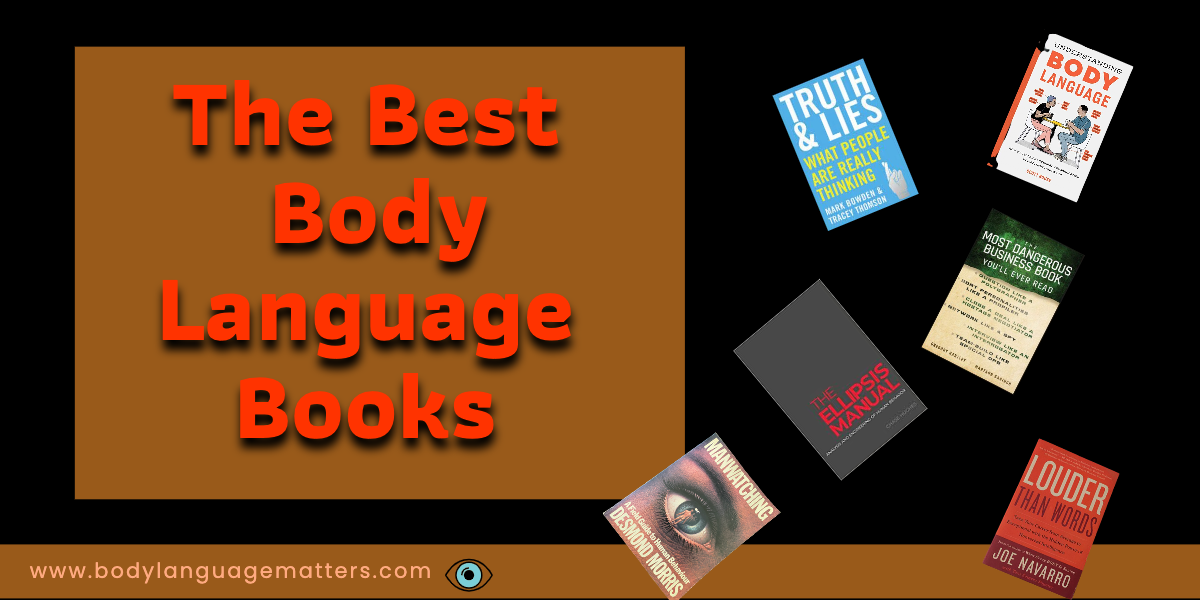If you are seeking the best books on body language, you have landed at the perfect spot. I have done extensive research and read almost all of the available books on this subject (full reviews provided below).
Finding the top body language book was a challenging task. That is why I recommend beginning our exploration with Desmond Morris’ Manwatching as a foundation on which to base our understanding. Although this book won’t teach you directly how to read people’s body language it will give you an understanding of human behavior and what types of information we are giving off a very important book when studying body language.
Subsequently, we suggest you acquire What Every Body Is Saying by Joe Navarro for an in-depth look at how to read body language correctly.
If you only read these two books you will have enough information to go out and read people’s body language.
- Manwatching A Field Guide to Human Behaviour by Desmond Morris.
- Manwatching A Field Guide to Human Behaviour by Desmond Morris.
- Review.
- What Every Body Is Saying by Joe Navarro.
- The Ellipsis Manual by Chase Hughes.
- I Can Read You Like A Book by Gregory Hartley and Maryann Karinch.
- Unmasking The Face by Paul Ekman and Wallace V. Frisen.
- Truth and Lies What People Are Really Thinking by Mark Bowden and Tracy Thomson.
- Six-Minute X-Ray Rapid Behavior Profiling by Chase Hughes
- Never Split The Difference Chris Voss.
- Louder Than Word Joe Navarro.
- Sizing People Up Robin Dreeke.
- Telling Lies by Paul Ekman.
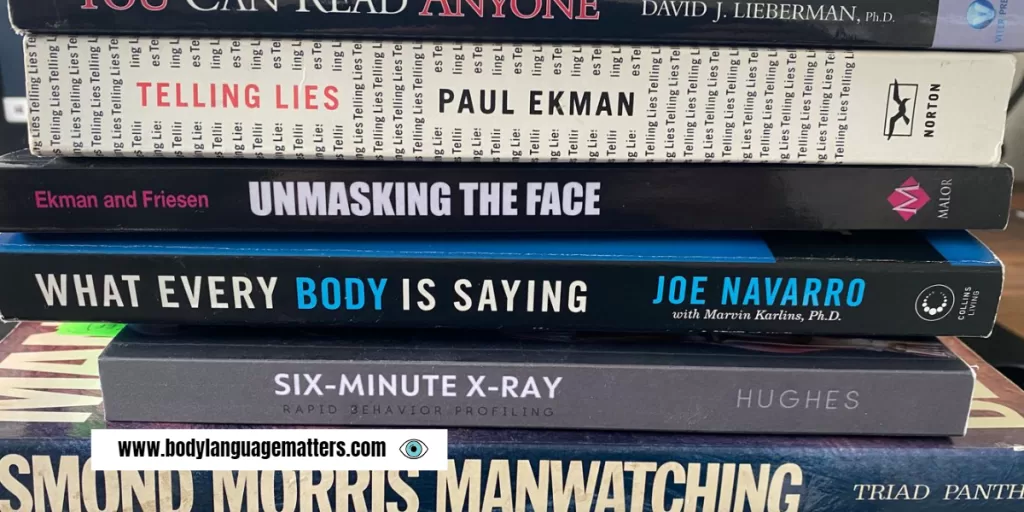
- Why bother with Body Language?
- 1, Manwatching A field Guide to Human Behaviour by Desmond Morris
- 2, What Every Body Is Saying by Joe Navarro
- 3, The Ellipsis Manual by Chase Hughes
- 4, I Can Read You Like A Book by Gregory Hartley and Maryann Karinch
- 5, Unmasking The Face by Paul Ekman and Wallace V. Frisen
- 6, Truth and Lies What People Are Really Thinking by Mark Bowden and Tracy Thomson
- 7, Six Minute X-Ray Rapid Behavior Profiling by Chase Hughes
- 8, Never Split The Difference Chris Voss
- 9, Louder Than Word Joe Navrro.
- 10, Sizing People Up Robin Dreeke
- 11, Telling Lies by Paul Ekman
- Additional Body Language Books.
Manwatching A Field Guide to Human Behaviour by Desmond Morris.
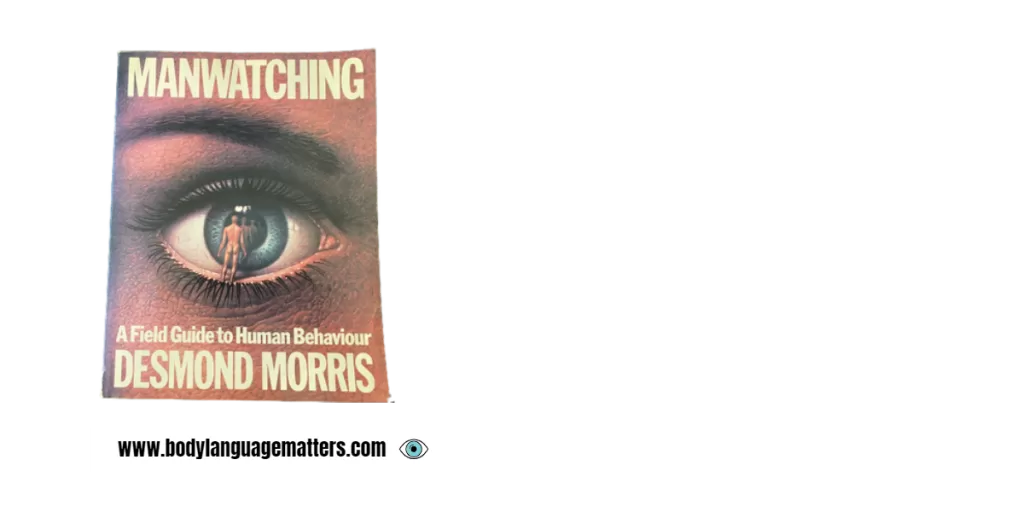
Manwatching A Field Guide to Human Behaviour by Desmond Morris.

The Best Body Language Book
- Desmond Morris is a zoologist and ethologist who uses his expertise in animal behavior to analyze human behavior in “Manwatching: A Field Guide to Human Behaviour”
- The book explores various aspects of human behavior, such as body language, facial expressions, and social interactions, and compares them to the behavior of animals
- Morris argues that many of our behaviors can be understood as evolved responses to the challenges of survival and reproduction and that understanding these behaviors can help us better understand ourselves and our fellow humans
- The book covers topics such as courtship and mating, aggression and dominance, and child-rearing and family dynamics
- The book also includes illustrations and photographs to help readers better understand and visualize the behaviors described.
Review.
You will be amazed by the wide range of topics that are covered in this book. It’s not only about body language, but also tells and all the little things in life that you never knew existed, like what is your dominant thumb, bet you don’t know, you will when you read this book.
The book may be outdated but it is still very relevant for the body language field, as human evolution doesn’t move that quickly.
His writing is capable of breaking down concepts into small digestible chapters and the way he delivers his message is easy to read. I liked how this book was well illustrated and made for an interesting read.
If you want to learn more about Desmon Morris check out this short YouTube clip to understand why we recommend it.
What Every Body Is Saying by Joe Navarro.

If there was ever anyone who put body language on the map, it would have to be Joe Navarro. What Every Body Is Saying is a must-read for anyone who wants to study body language.
The book is broken into nine chapters, starting with Chapter One, Mastering the Secrets of Nonverbal Communication. Topics include how to become a competent observer, understanding what a baseline is, and watching for multiple tells.
Joe then covers different parts of the body and how we can read body language from the ground up. If you’re going to read a book on Body Language, this would have to be on my list as one of the first to study. Here is a Ted Talk Joe Navarro did a few years ago YouTube.
The Ellipsis Manual by Chase Hughes.
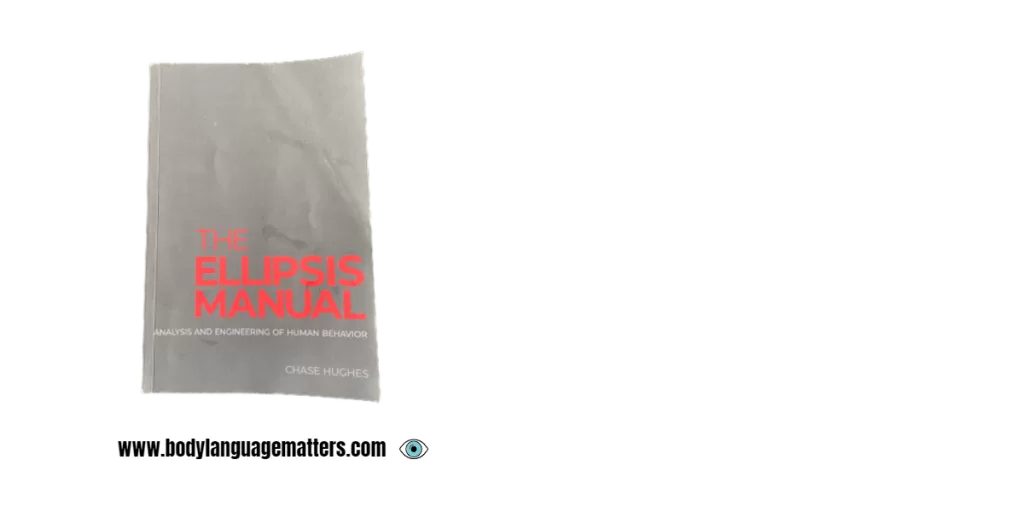
The Ellipsis Manual covers body language, as well as going deep into all aspects of human behavior, covering topics such as human needs and profiling, NLP, hypnosis, gaslighting, CIA methods, and job interview tips.
This is a powerful and dangerous book, I say dangerous because the tools and techniques in The Ellipsis Manual could be used for good or evil.
I wish I had this book twenty years ago when starting out in the world of hypnosis, deception, and body language. Highly recommended if you have an analytical mindset. Check out this link to hear Chase Huges talk about his book the Ellipsis Manual.
I Can Read You Like A Book by Gregory Hartley and Maryann Karinch.
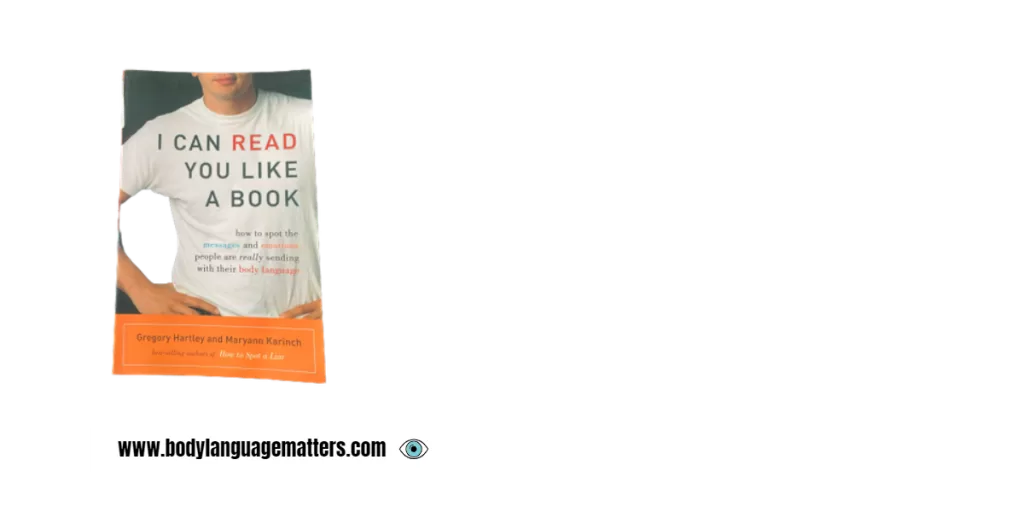
Learn anything you can from Greg Hartley- after watching Greg on The Behavior Panel over the past year, I wouldn’t want to get on the wrong side of this man. I’m intrigued and intimidated all at the same time when I watch Mr Hartley. I Can Read You Like a Book is Greg’s take on how to read body language. Part one covers the steps to reading body language, cultural norms, and how to understand them.
Part two goes into the R.E.A.D technique (Review, Evaluate, Analyze, Decide) This is the main bulk of the book that covers how to decode the different parts of the body and understand what our non-verbals are communicating to the world.
There are multiple exercises at the end of each chapter you can use to practice honing your body language skills. Another great book to start your learning journey
Unmasking The Face by Paul Ekman and Wallace V. Frisen.
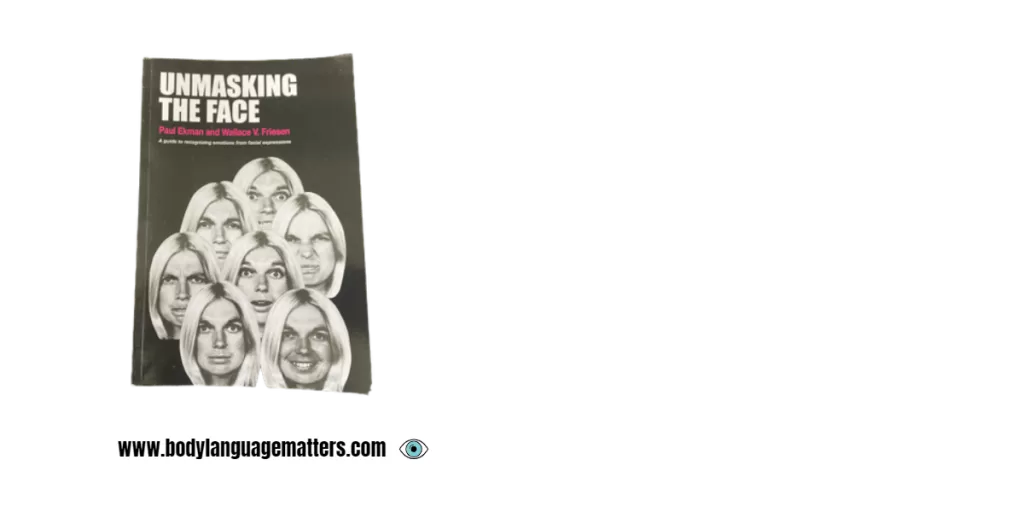
Paul Ekman is a renowned scientist who is world-renowned for his research into facial expressions. He has found that many basic facial expressions are universal among different cultures and that the face often reveals what we feel inside.
I read this book, and I must say that I found it dry and difficult to read. It’s written like a text, not a story. However, I have found the book invaluable as a reference point when noticing an expression on a person’s face.
It’s worth picking up if you’re serious about learning non-verbal facial express
Truth and Lies What People Are Really Thinking by Mark Bowden and Tracy Thomson.

This was an interesting read, and it taught me a lot about how to interpret others in person. I found the chapters on body language lies particularly interesting.
The book is split into four parts, part one: genuine deceptions, part two: dating, part three: friends and family, and part four: working life.
Although not a beginner’s book on body language, this is a unique take on understanding the psychology of people. The book should be included in the best body language books because it provides a different approach to understanding the subject.
Six-Minute X-Ray Rapid Behavior Profiling by Chase Hughes

If you’re really want to study body language and start to become better at behavior profiling this book is a must.
The Six-Minute X-Ray is broken down into eighteen bitesize chapters that go deep into uncovering how we communicate and self-awareness there is a printout and training plans within the book and Chase gives you a detailed plan on how best to learn his technique in chapter 18.
I loved chapter seven on deception detection, if you want to learn fast learn from the best.
Never Split The Difference Chris Voss.
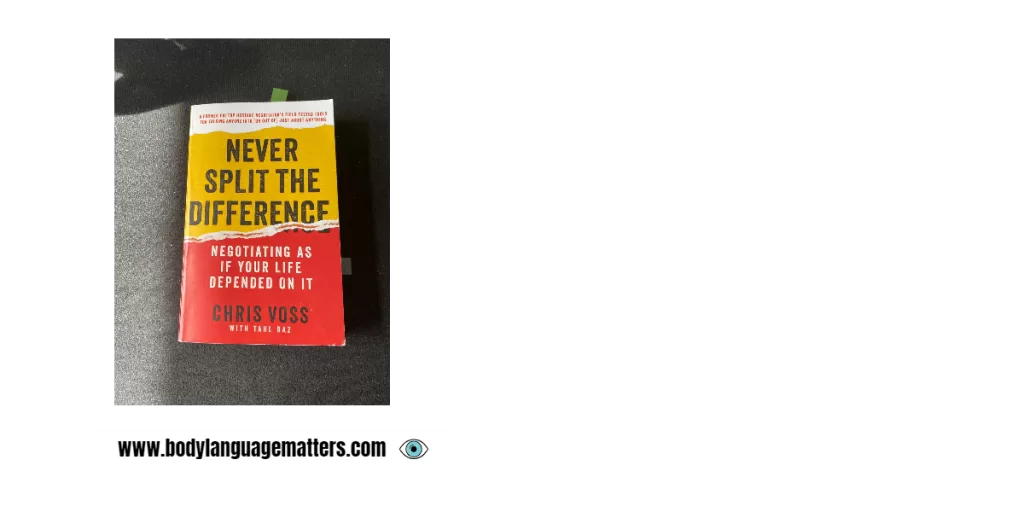
Some will disagree with me on this one should Never Split The Difference be in the best body language books. Well, I think so from all the books on the list this is the book that I have found most useful in the real world.
Chris Voss’s techniques are real-world, hard-hitting, and actionable. What makes this an out-and-out body language book is the 7-38-55 percent rule where Chris explains the most powerful assessment tools are not words but body language and tone of voice.
The book is made up of ten chapters going deep into negotiating and body language. You would do very well to pick up a copy of Never Split The Difference. Brilliant read.
Louder Than Word Joe Navarro.
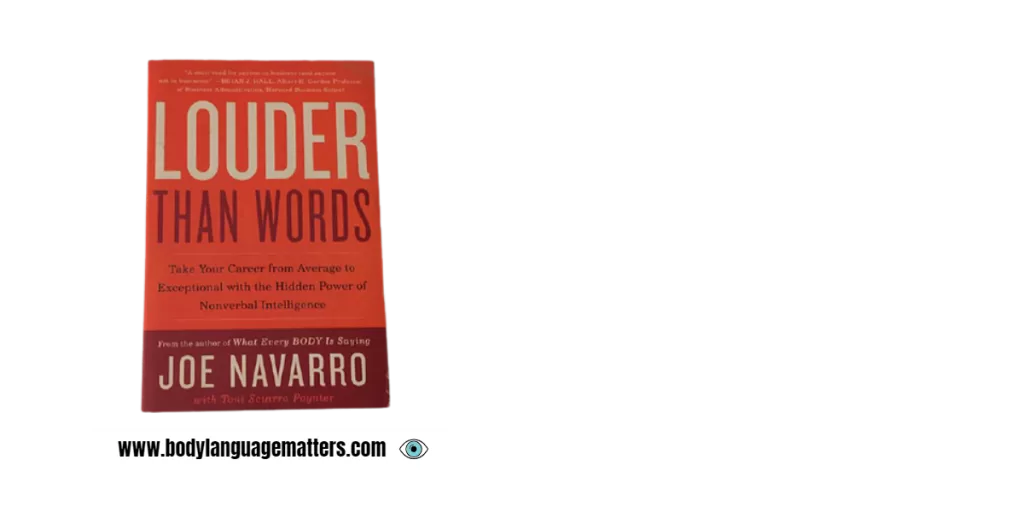
The follow-up to What Every Body is Saying, this book takes the powerful techniques from that book and adapts them to different contexts.
The best way to balance between pushing and being pushed is by understanding anxiety and discomfort in those you are speaking with. One of my favorite parts of the book is when Joe describes that our feet reveal where we’re really interested.
One other interesting piece is the positioning of the thumb outside the pocket with the palm inserted into the pocket. The book covers nine chapters in two parts. The best thing about learning from Joe Navarro is that its real-world experience that has taken decades to understand and even more time to explain.
Sizing People Up Robin Dreeke.

Identifying the subtle behavioral differences between the trustworthy and the deceitful it can greatly help you in your personal and professional relationships.
In the book, you will find lots of personal anecdotes and tips. It’s an interesting read and worth your time if you are studying body language from a different perspective.
A tip I picked up from the book was how to improve the chances of making the right decision when talking to people or making a decision when someone is trying to persuade you. You have to look beyond what they’re saying, paying attention to their body language, and considering the context. This could make it easier to figure out that someone is lying, among other things.
Is it a book I would recommend right off the bat, the answer would have to be a no, however, it does have merit and you can learn a thing or two from Robin Dreeke – Take a listen to some of the podcasts he featured on before purchasing Sizing People Up. Check Robin Dreeks lecture here.
Telling Lies by Paul Ekman.

Paul Ekman is one of the world’s most renowned experts on facial expression. His research is precise and well-researched. He has a section called “Clues to Deceit” in his book which speaks very specifically about facial expressions & how they can be used to identify when people are lying. However, this book is purely academic read there for dry and to the point. But if you are looking to get into the world of micro exceptions this could be perfect for you.
Additional Body Language Books.
- Emotions Revealed by Paul Ekman.
- Body Language by Julius Fast.
- Without Conscience by Robert D. Hare.
- Snakes in Suits by Paul Babiak and Robert D. Hare.
- The Most Dangerous Business Book by Maryann Karinch and Gregory Hartley.
- Body Talk by Desmond Morris.
- Dangerous Personalities by Joe Navarro.
- Understanding Body Language by Scott Rouse.
How To Read A Book On Body Language
“Retain and practice what you have learnt the easy way”.

I don’t want to teach you how to cook eggs, so feel free to skip over this bit. However, for those who are interested, there is a way of retaining information on the go so you can learn and practice at a faster pace. There are countless studies that show the best way of learning anything is to get out there and fail. I’m a strong advocate for that. The best thing about learning body language is that you don’t have to let people know you’re practicing (I would suggest you don’t).
How I retain information from a book
It can be hard to read non-fiction. I’ve read hundreds of books and hardly remember anything I’ve read. I have to read around the subject for years before anything sinks in. Well, there is a way to circumnavigate this problem and always have the information you require to hand in any time of the day or night.
First thing first the way I start a body language book is by reading the description on the back then I open the book take a look at the table of content see what jumps out at me take a mental note and jump into the chapters or chapters that interest me to get a taste of the author style of writing and topics giving me something to look forward to as I read the book.
From what I have learned from reading many non-fiction books over the years, most will cover the same ideas. Body language is pretty much the same with different names or spins on subject topics.
Once I’ve done my first pass of the book, I’ll decide how I want to take notes.
Taking Notes vs Highlighting
When I read a book, I sometimes take notes on the go using a note-taking app like Evernote or Notion. Currently, my preferred method of note-taking is with Notion, which I have integrated with my Second Brain and How to Take Smart Notes by Sönke Ahrens. Both topics are too in-depth for this blog, but you should check them out on YouTube for more information.
My second method is highlighting text within a physical book and then once read, writing my notes on Notion to cement my knowledge even further. This does one of two things, the first is active recall and the second is reflection. I never copy word for word what I highlight, as I want to burn the new knowledge into my memory. If this remembering what you have read interests you, then check out Make It Stick by Peter C. Brown.
I write my notes chapter by chapter using topic headings from the book as a guide and also noting any quotes that capture my attention.
Practice What You’ve Learnt.

For me, if I’ve spent my money and taken the time to read a book on body language, I want to get the most out of it practically. The best way I’ve found is to take it into the real world. With the power of my second brain, I can quickly reference anything on my phone. To learn body language more effectively, I will often go into a cafe or bar and observe the conversations happening in the real world while sipping a cup of coffee or a cold beer. It’s amazing what you can see when you start to use active recall.
To start, just observe and see what catches your eye. Once you see a conversation or a piece of body language, try to interpret it for yourself and then look it up on your phone or in the book. Start to build a bank of knowledge in the real world, real-time. There is something more to learning when all the senses are active in a different environment other than your home.
There are many books and videos on YouTube that will teach you how to retain what you’ve read. These are some of the best methods I have found over the years. Now let’s get into why you came here in the first place, the best body language books.
Frequently Ask Questions
What Are The Benefits Of Learning Body Language?
Reading people’s nonverbal communication is an essential part of day-to-day activities. It could be the difference between life and death. Studying body language can open up a whole load of conversations. It’s like getting a secret superpower and you’ll find that it takes even the most uncomfortable conversations to a new level.
When I speak to people, I don’t actively watch their body language unless I’m practicing something covertly. I tend to pick up on people’s non-verbal communication naturally over time.
WARNING! If you think you can learn body language by reading one book, then you are sadly mistaken. Like anything in life, these things take time and effort to truly become a master – and every time you engage in any human analysis, it’s like painting a new canvas time and time again. There are no quick tricks to learning human behavior.
Learning Body Language Benefits
- Better communicator.
- Build rapport at a rapid pace.
- Become a more confident person.
- Communicate with authority.
- Understand survival instincts that drive human behavior.
- Create better personal and professional relationships.
- Deception detection.
- Physical protection.
- Psychology protection.
Why bother with Body Language?
There are many reasons why bother with body language. It can be used to communicate messages that cannot be verbalized, such as when a person is feeling uncomfortable or threatened. It can also be used to create or reinforce social bonds, such as when two people share a smile or handshake. Additionally, it can be used to express emotions, such as happiness, sadness, or anger.
While body language can be helpful in many situations, it is important to remember that it is often misinterpreted. For example, someone who is standing with their arms crossed may not necessarily be angry or closed off; they could simply be cold. It is always best to verbally confirm what someone’s body language is communicating before making any assumptions.
If you’re interested in learning more about body language, there are many great resources available. Joe Navarro’s book “What Every BODY Is Saying” is a great place to start. Navarro is a former FBI agent who specializes in nonverbal communication
Body language is a form of nonverbal communication in which physical behaviors, such as gestures, posture, and facial expressions, are used to convey messages. These messages can be positive, negative, or neutral, and they can be conveyed to individuals or groups.
While some people may be naturally good at reading body language, others may benefit from learning more about it. There are many books on the subject that can teach you how to read body language cues. Joe Navarro’s “What Every Body Is Saying” is one of the best books on the topic.
Learning to read body language can be useful in a variety of settings, from personal relationships to professional interactions. Being able to read nonverbal cues can help you better understand what someone is really saying, and it can also give you an advantage in negotiations and other situations.
Final Thoughts
When it comes to the best body language books we firmly believe we have to go back to basics and start learning from the ground up to get a better understanding of how the topic has evolved into the current day then we can start to build and grow. We stand on the shoulders of giants.
Body language and nonverbal communication will become very popular in the next few decades. With a growing population and access to knowledge, I predict that body language will become even more popular, making it an essential skill for life. You may also find this post interesting
